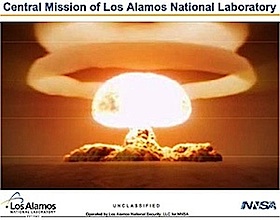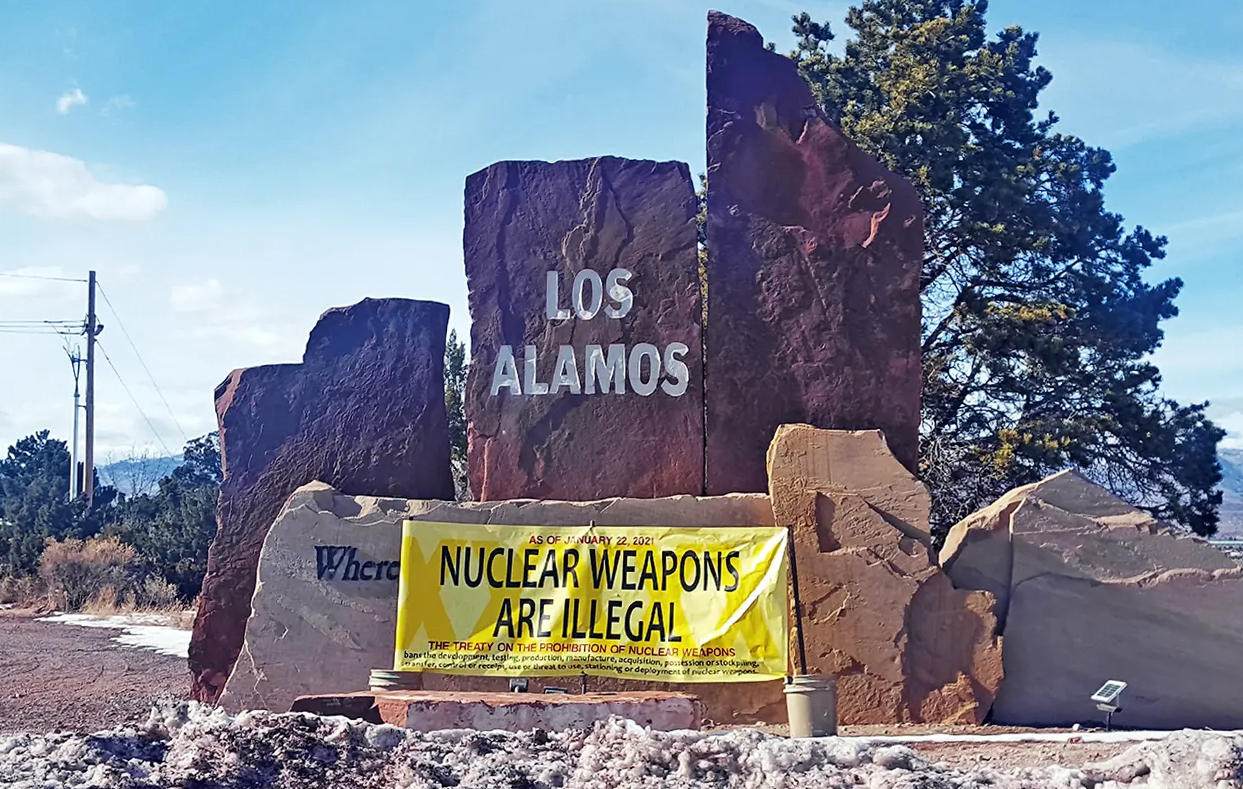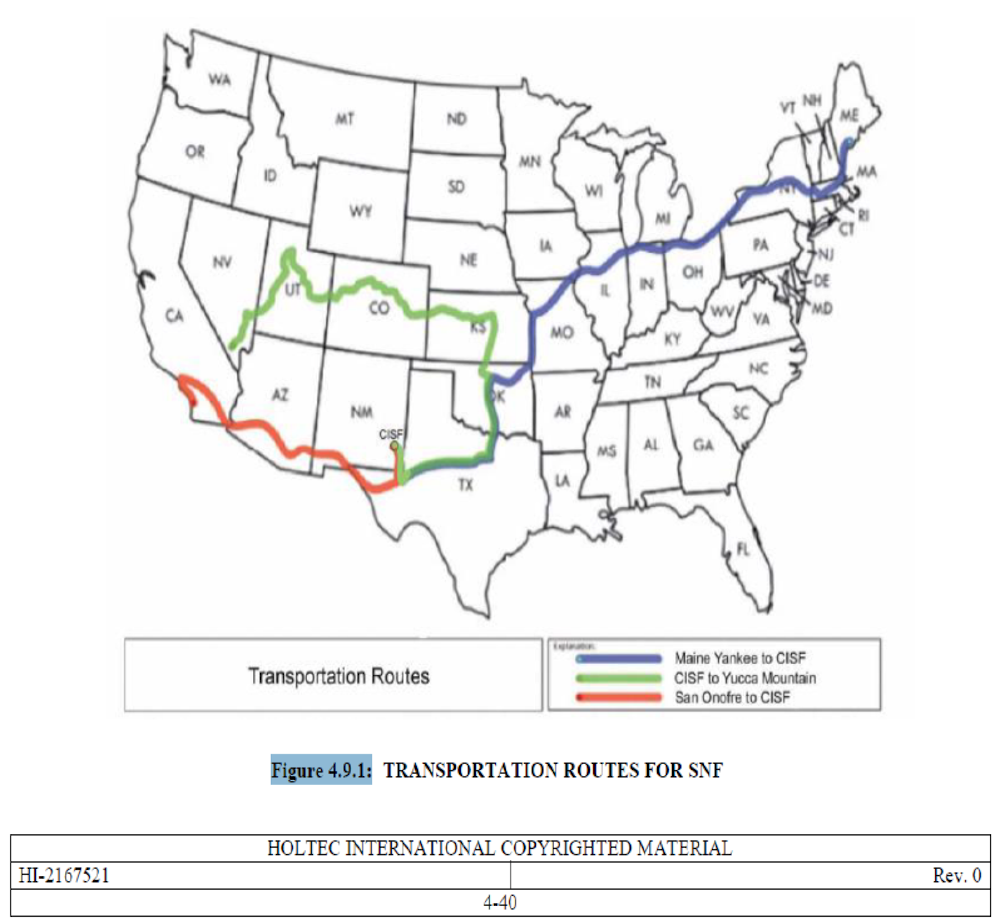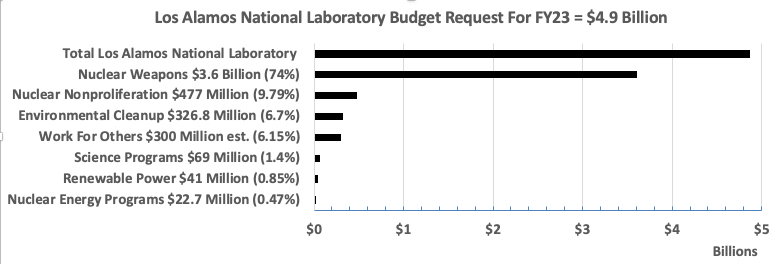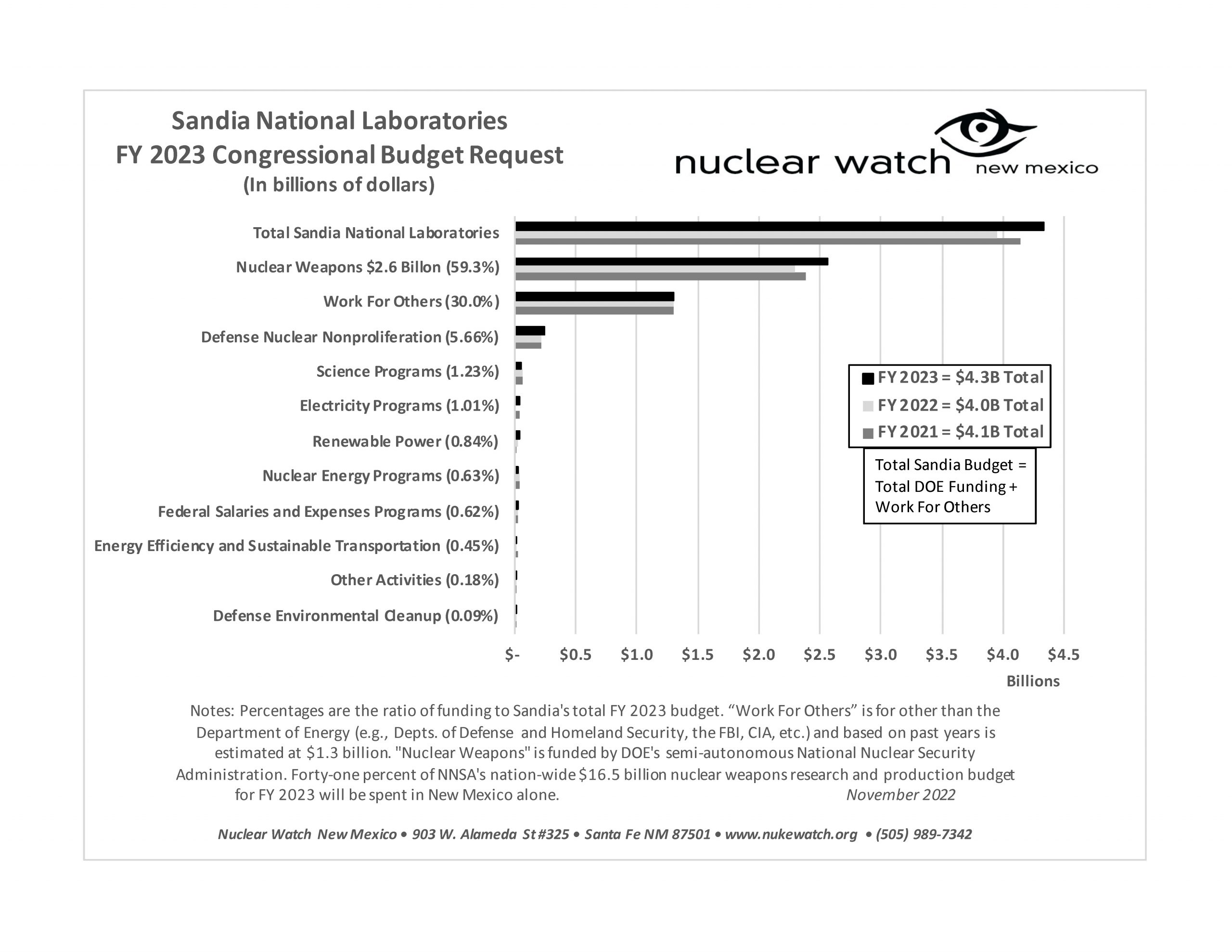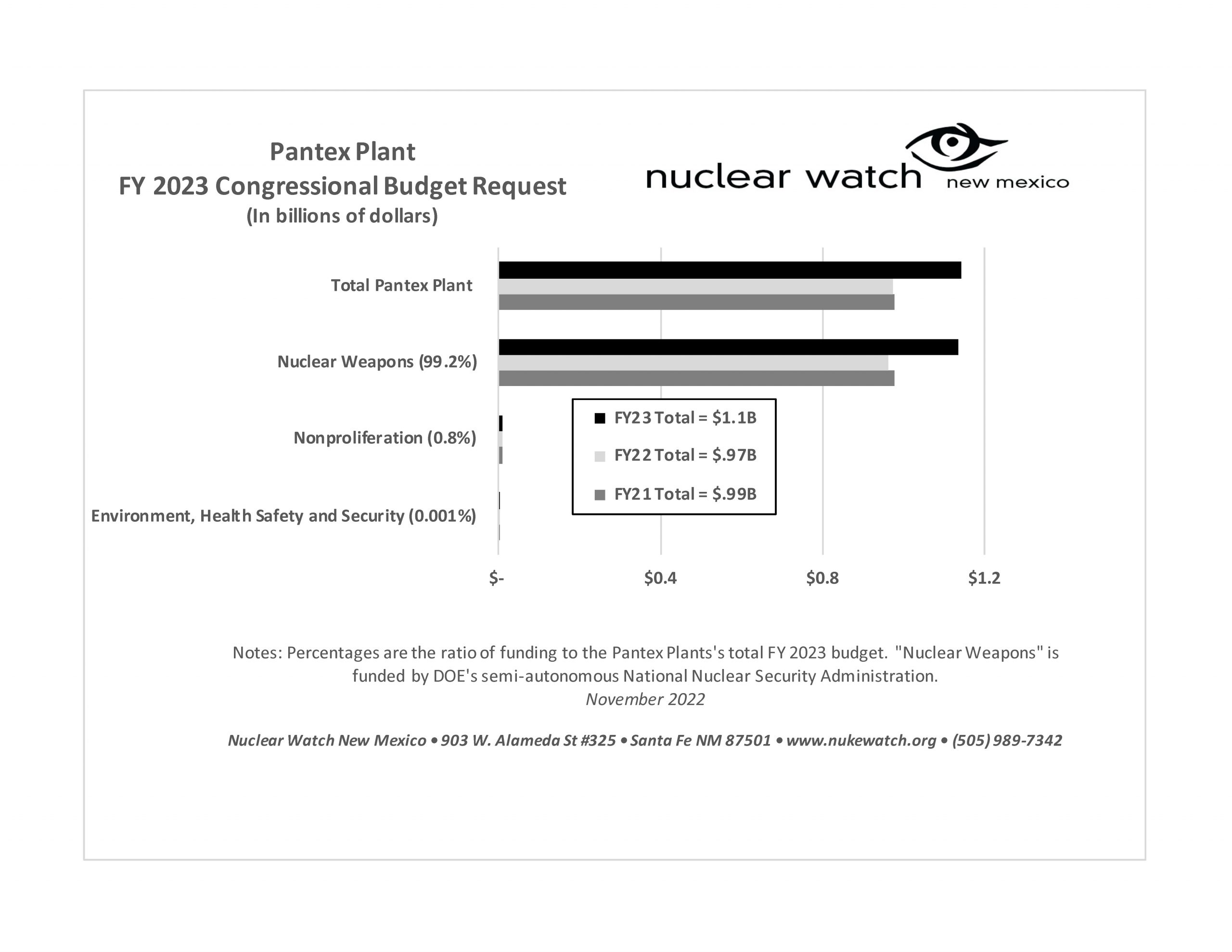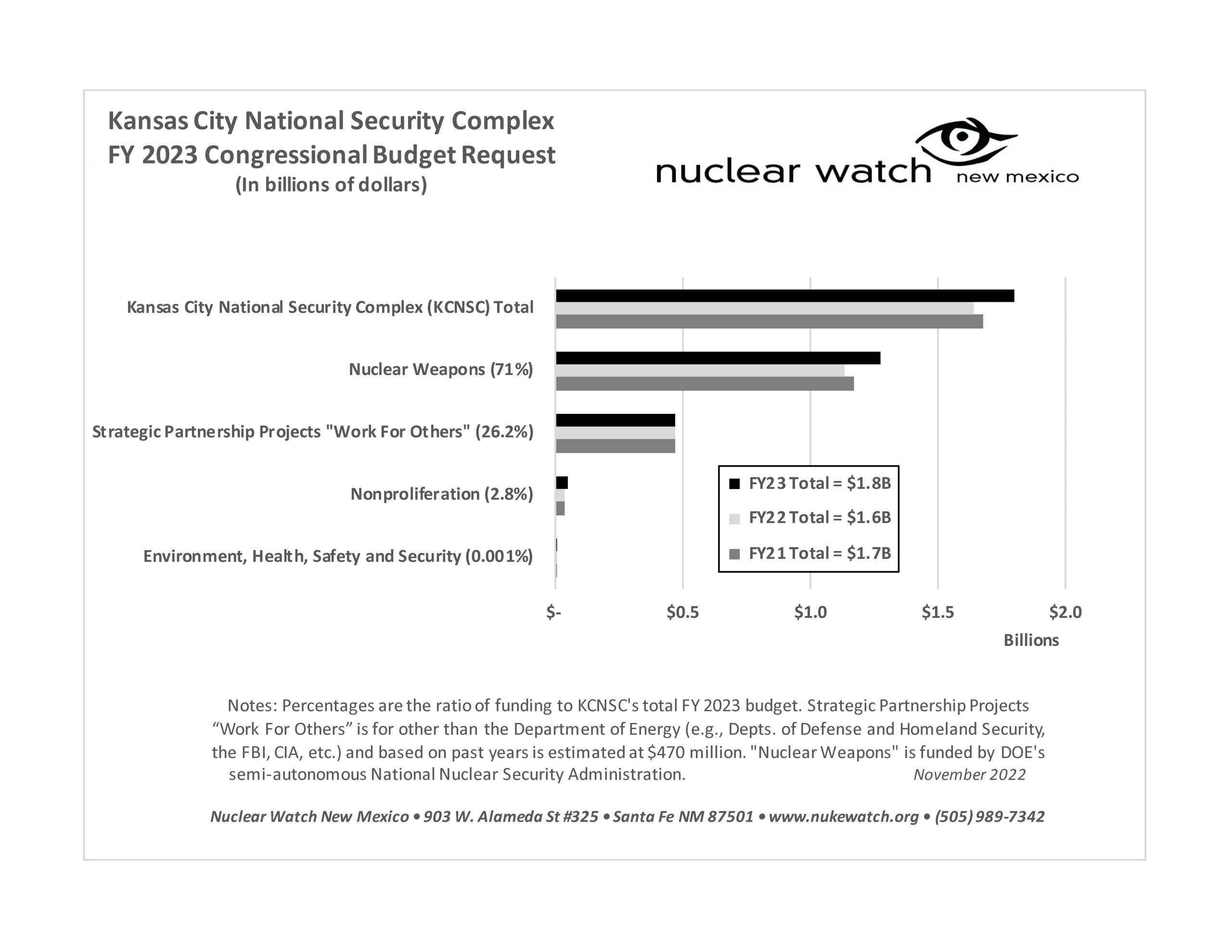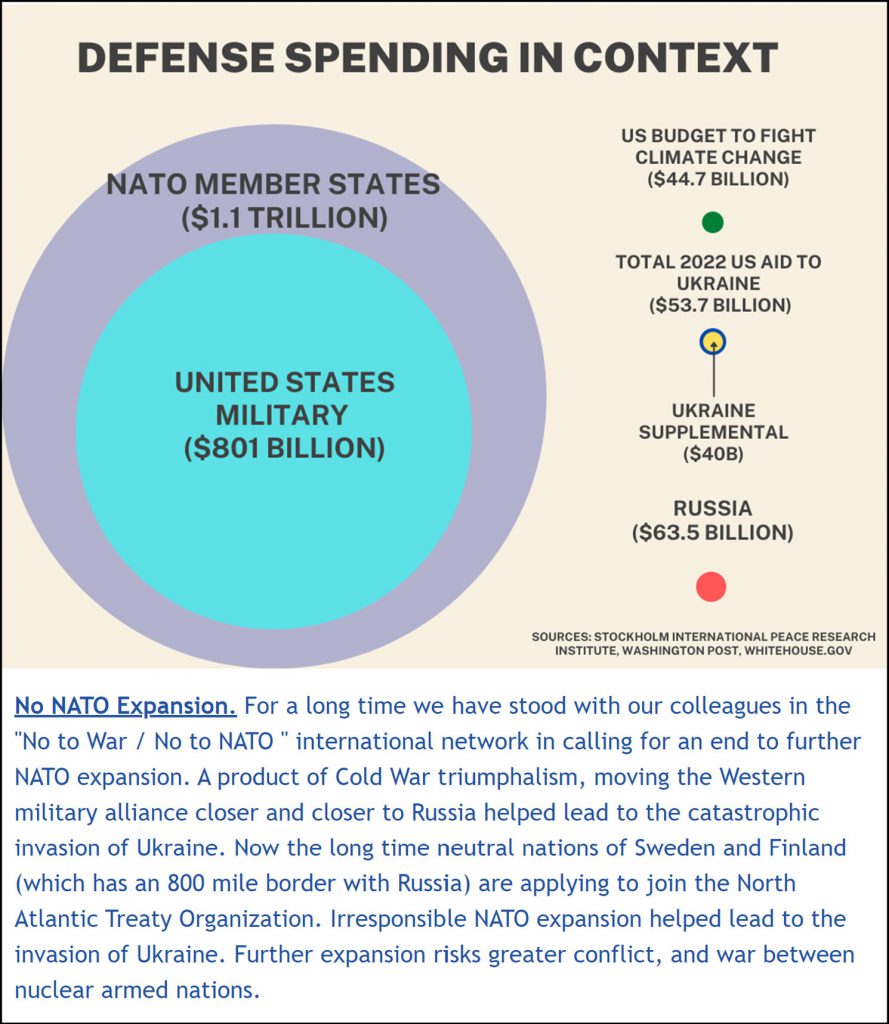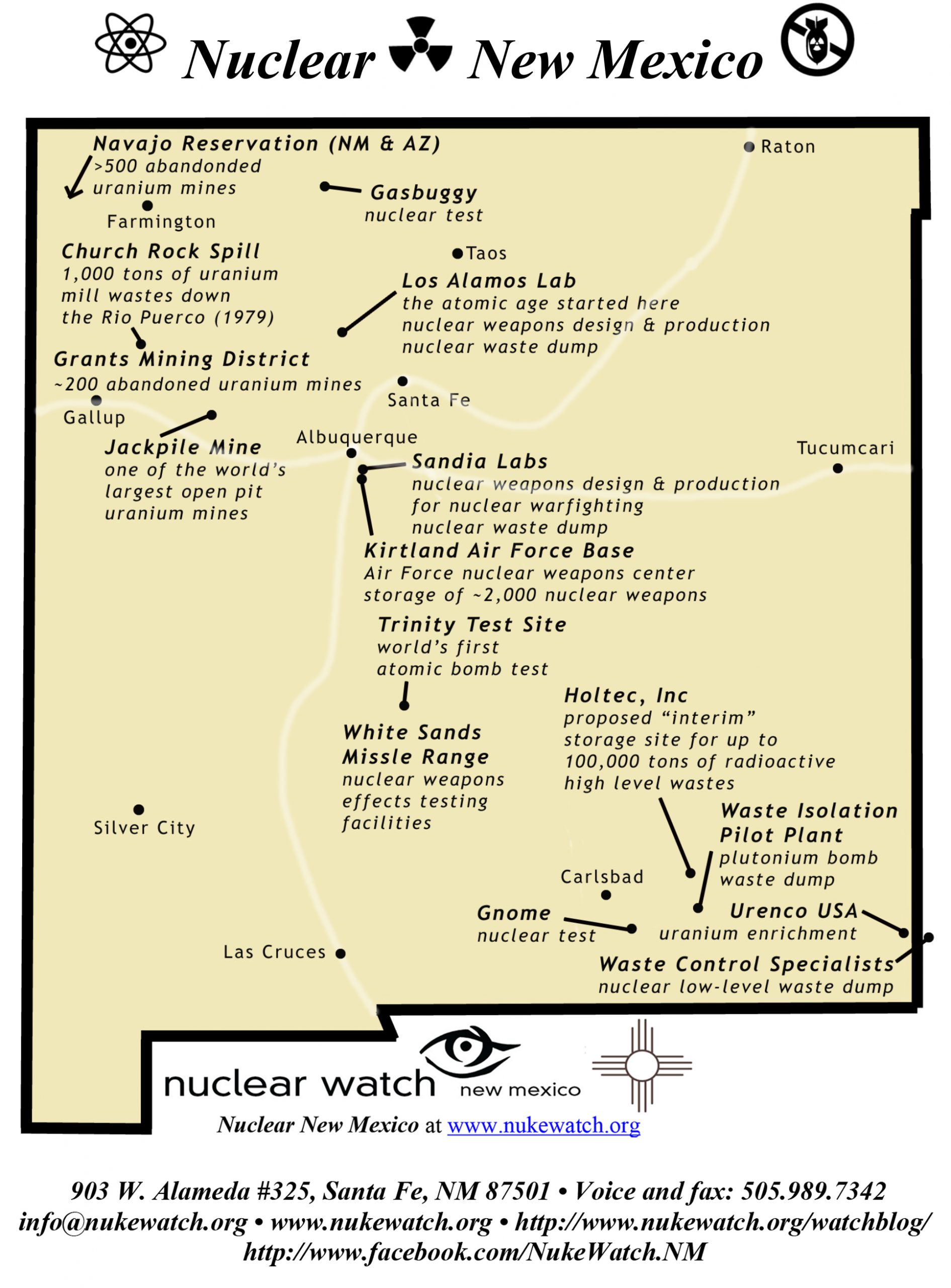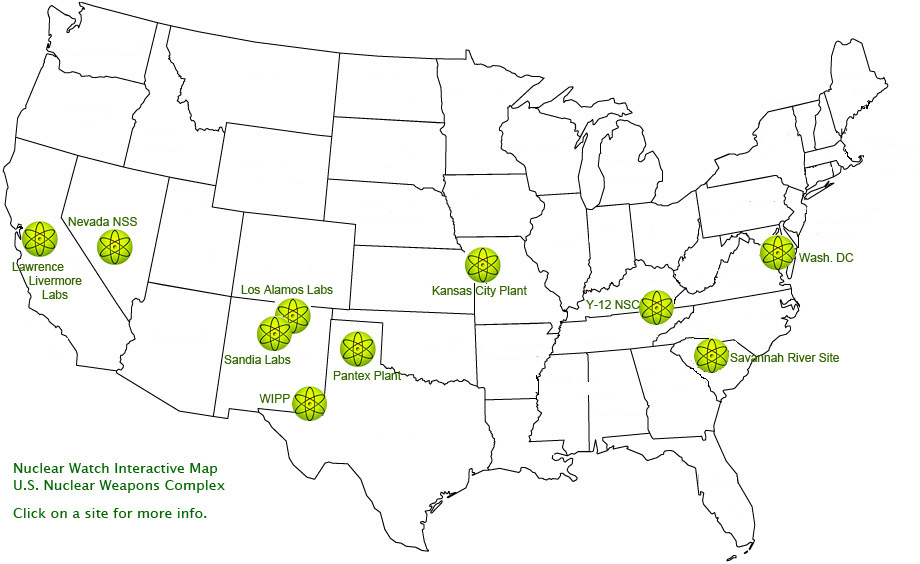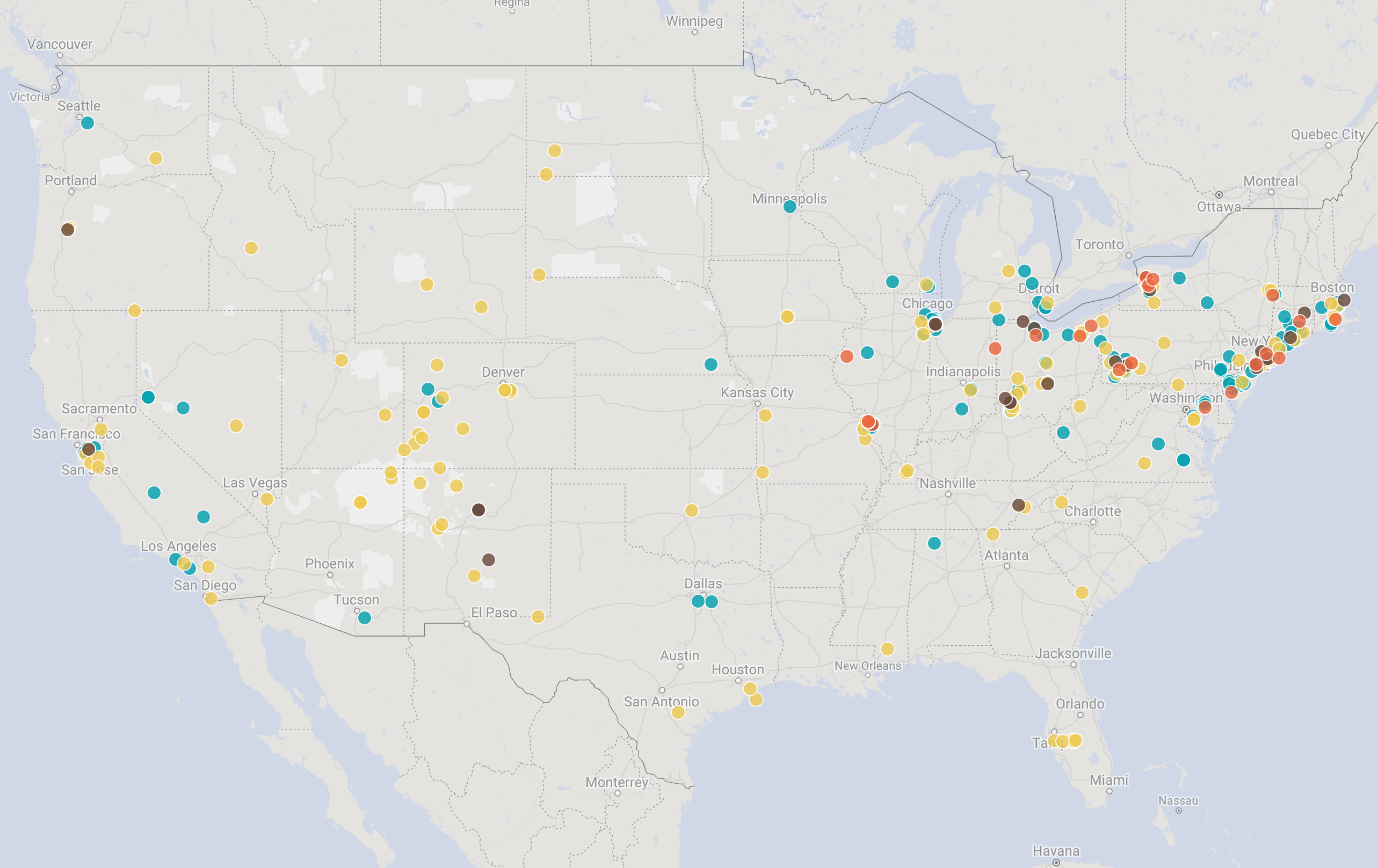QUOTE OF THE WEEK
Nothing Found
It seems we can’t find what you’re looking for. Perhaps searching can help.
LANL’s Central Mission: Los Alamos Lab officials have recently claimed that LANL has moved away from primarily nuclear weapons to “national security”, but what truly remains as the Labs central mission? Here’s the answer from one of its own documents:
LANL’s “Central Mission”- Presented at: RPI Nuclear Data 2011 Symposium for Criticality Safety and Reactor Applications (PDF) 4/27/11
Banner displaying “Nuclear Weapons Are Now Illegal” at the entrance in front of the Los Alamos National Lab to celebrate the Entry Into Force of the Nuclear Weapon Ban Treaty on January 22, 2021
Nothing Found
It seems we can’t find what you’re looking for. Perhaps searching can help.
Follow the Money!
Map of “Nuclear New Mexico”
Nuclear Watch Interactive Map – U.S. Nuclear Weapons Complex
In 1985, US President Ronald Reagan and and Russian President Mikhail Gorbachev declared that “a nuclear war cannot be won and must never be fought.”
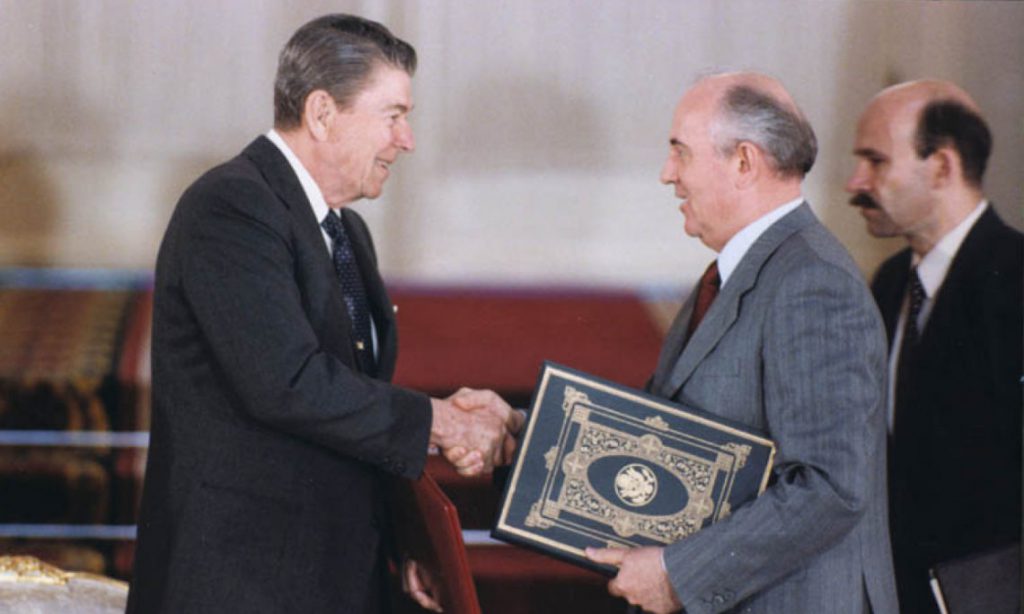
Waste Lands: America’s Forgotten Nuclear Legacy
The Wall St. Journal has compiled a searchable database of contaminated sites across the US. (view)
Related WSJ report: https://www.wsj.com
2022 BLOG POSTS
Nothing Found
It seems we can’t find what you’re looking for. Perhaps searching can help.
New & Updated
Groups Seek Broader Review of Nuclear Work
Federal installations face a deadline of making 80 cores per year by 2030, with the first 30 due in five years.
“Nuclear Watch New Mexico, South Carolina-based SRS Watch and California-based Tri-Valley Communities Against a Radioactive Environment sent a letter to the U.S. Energy Department last week, asking that a rigorous environmental review be done before production is ramped up at Los Alamos National Laboratory in northern New Mexico and the Savannah River Site near Aiken, South Carolina.”
By: Susan Montoya Bryan | mbtmag.com Feb 18th, 2021
ALBUQUERQUE, N.M. (AP) — Watchdog groups want the Biden administration to reconsider a decision by a U.S. agency not to conduct a more extensive environmental review related to production of the plutonium cores used in the nation’s nuclear arsenal.
The renewed request comes as federal installations in New Mexico and South Carolina face a deadline of making 80 cores per year by 2030, with the first 30 due in five years.
With jobs and billions of dollars in spending at stake, the effort to modernize the nation’s nuclear arsenal has enjoyed bipartisan support in Congress over the years, especially among New Mexico Democrats whose districts stand to benefit from the economic windfall. The Biden administration has taken swift action to reverse some policies by the Trump administration but has yet to say whether it plans to push ahead with making more plutonium cores. It does say that work is being reviewed.
Nuke groups pressing Biden administration for more pit production environmental review
Savannah River Site Watch, Nuclear Watch New Mexico and Tri-Valley CAREs, represented by the the S.C. Environmental Law Project, in early February sent a letter and supporting documents to the Department of Energy and its National Nuclear Security Administration outlining grave concerns and allegations of cut corners.
By Colin Demarest cdemarest@aikenstandard.com postandcourier.com| February 17, 2021
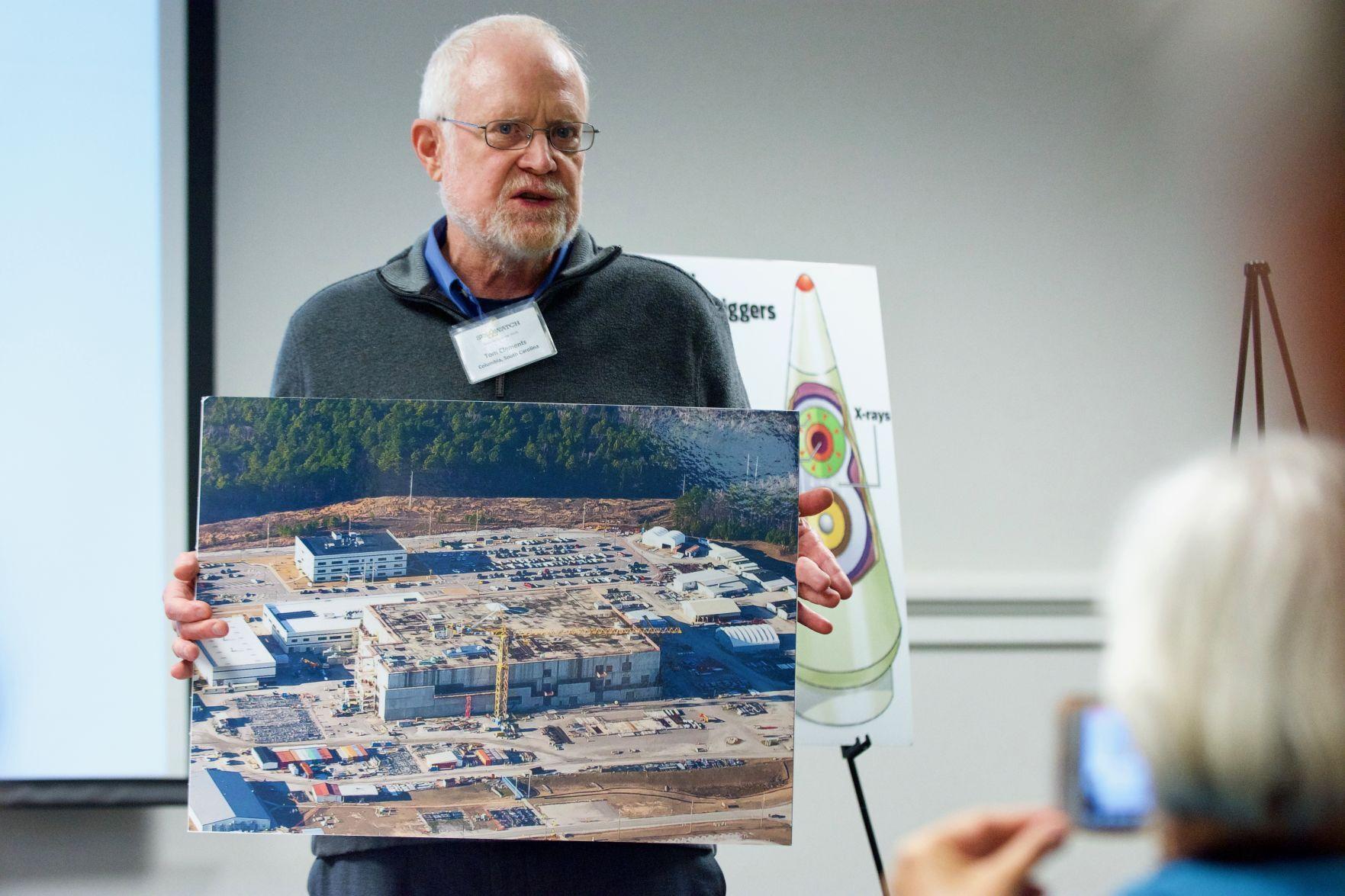
Staff photo by Colin Demarest
A coalition of nuclear watchers and nonprofits is again lobbying the federal government to conduct a more rigorous environmental review of plans to produce nuclear weapon cores in South Carolina and New Mexico, this time hoping the new administration is more amenable.
Savannah River Site Watch, Nuclear Watch New Mexico and Tri-Valley CAREs, represented by the the S.C. Environmental Law Project, in early February sent a letter and supporting documents to the Department of Energy and its National Nuclear Security Administration outlining grave concerns and allegations of cut corners.
Continue reading
Editorial: LANL’s lack of wildfire plan, action irresponsible
By Albuquerque Journal Editorial Board
Tuesday, February 16th, 2021
One would think an entity with 13 nuclear facilities that experienced two catastrophic wildfires in recent years would be taking fire prevention seriously.
After all, the 2000 Cerro Grande Fire burned about 7,500 acres of Los Alamos National Laboratory property, resulting in $331 million in damages. And that figure doesn’t include an estimated $15 million in lost productivity per week during a 15-day shutdown and recovery period.
And then there was the 2011 Las Conchas Fire. While it ultimately burned only about 1 acre of LANL land, it forced roughly 10,000 LANL employees out of their offices and out of Los Alamos for more than a week.
But according to a recent report from the Department of Energy’s Office of Inspector General, managers at LANL have not fully implemented measures designed to reduce the impact from wildland fires, including tree thinning in buffer zones below overhead power lines.
The report is so disappointing because the Las Conchas Fire, which burned about 156,293 total acres, started when a tree fell on a power line in the Santa Fe National Forest, resulting in a fast-burning “crown fire” that burned through tree canopy.
Biden Administration Asked to Review Plutonium Pit Expansion Plans
Jay Coghlan of Nuclear Watch New Mexico: “It’s important to note that no future pit production is to maintain the safety and reliability of the existing nuclear weapons stockpile. Instead, it is for speculative new nuclear weapons designs that can’t be tested because of the international testing moratorium, or perhaps worse yet may prompt the U.S. back into testing, after which surely other nations would follow.”
FEBRUARY 11, 2021
Public interest organizations sent a letter to the U.S. Department of Energy (DOE) requesting that it address calls for a rigorous environmental review of plans to expand production of nuclear bomb cores at the Los Alamos National Laboratory in New Mexico and the Savannah River Site in Aiken, South Carolina.
The non-profit groups—Nuclear Watch New Mexico, SRS Watch and Tri-Valley Communities Against a Radioactive Environment—have previously submitted a number of formal comments and information related to the environmental and public health risks associated with a significant expansion of plutonium “pit” production at the two DOE sites.
Continue reading
Consequences of Uranium Mining in the Southwest
Addressing the consequences of uranium mining in the Southwest, Anna Benally said, “When uranium mining came to Navajo Land, we were never told it was unsafe to be around it. We were never told to keep our children from playing near it or keep our livestock from coming around it. We were just happy to have jobs.”
By: Kristin Scheer | Peace Works Kansas City
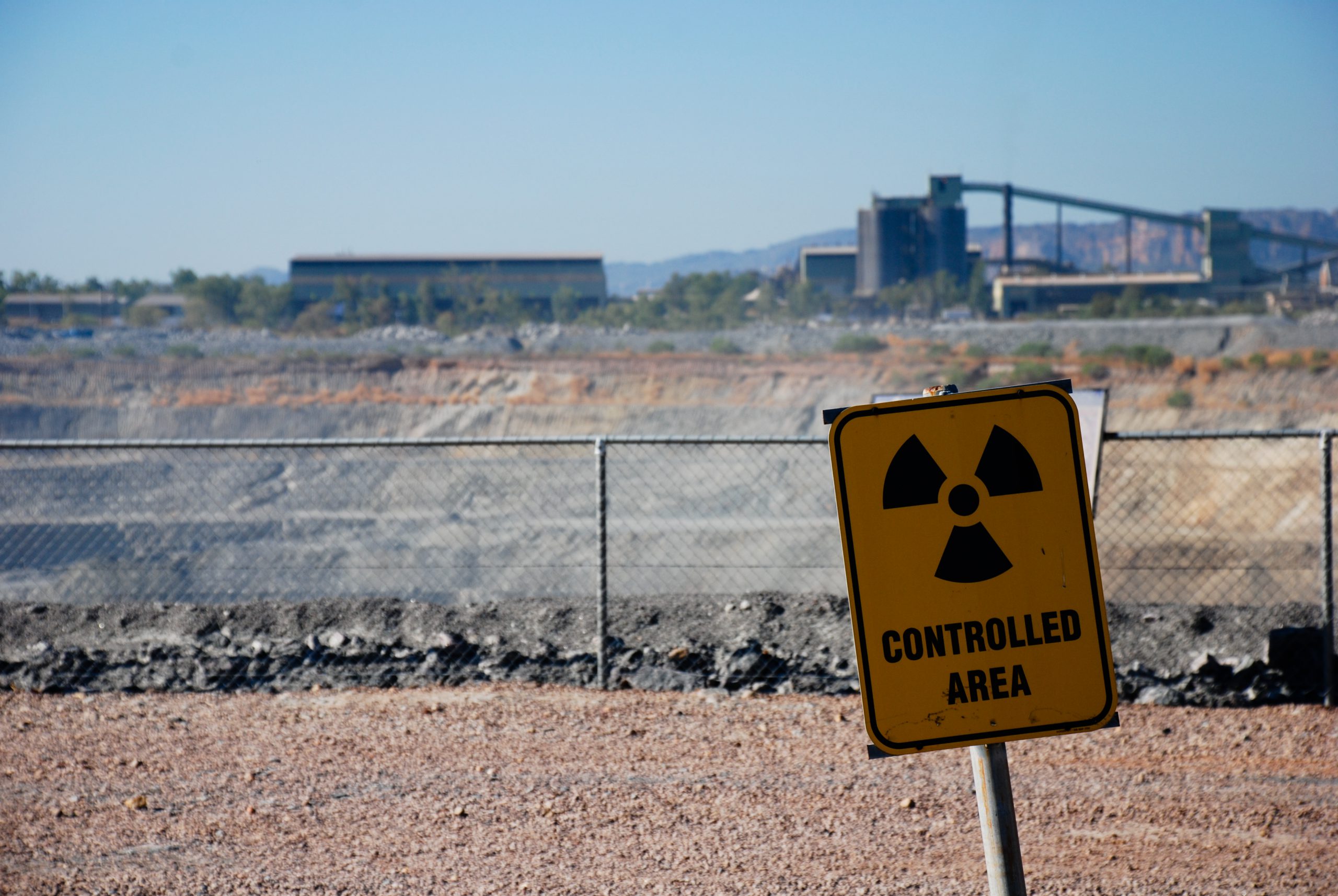
Uranium mining is still causing problems in the US. This was the topic of Radio Active Magazine on KKFI, 90.1 FM Community Radio, on Feb. 9. Activists from the Multicultural Alliance for a Safe Environment (MASE), based in Albuquerque, NM, joined PeaceWorks-KC leaders for the program.
The MASE activists on the program were Anna Benally, a former uranium mine employee turned activist who is working to heal the land and protect the health of people and livestock, and Susan Gordon, coordinator of MASE. PeaceWorks Board members Ann Suellentrop and myself introduced the MASE leaders and interviewed them. The podcast is online at https://kkfi.org/program-episodes/fighting-uranium-contamination-in-the-southwest/.
Atomic weapons plan risky for SC, lawyers say. Noted legal service joins fray
Savannah River Site Watch, Nuclear Watch New Mexico and Tri-Valley CARES recently retained the Environmental Law Project. They say pit factories are expensive, unnecessary, needlessly threaten the environment, and could leave unused plutonium stranded permanently in places like SRS.
BY: SAMMY FRETWELL | thestate.com FEBRUARY 12, 2021
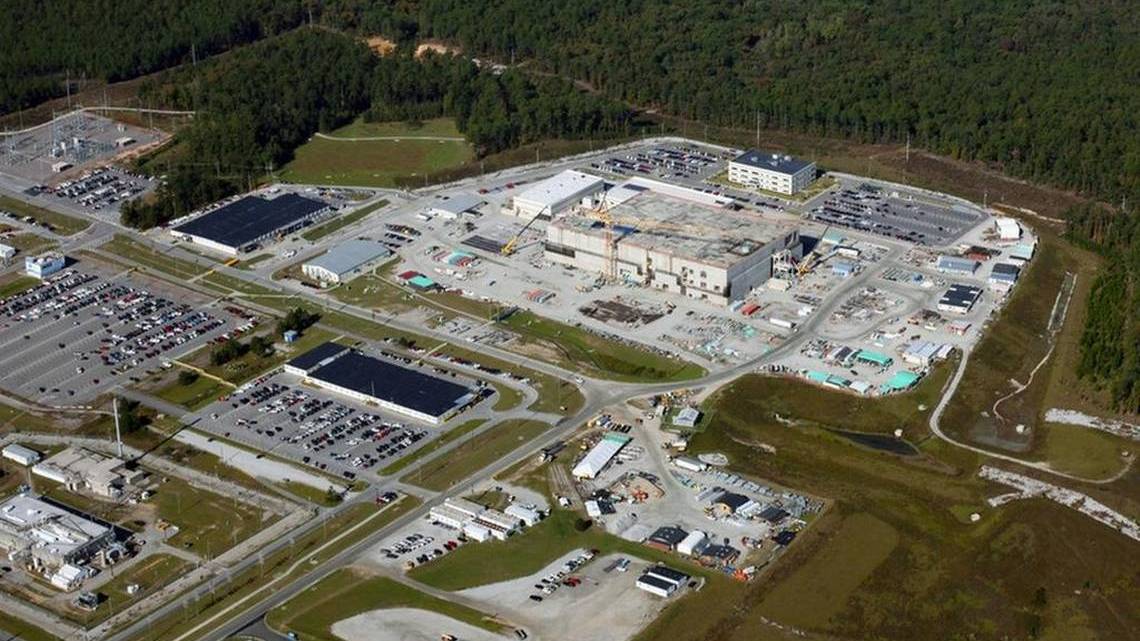
A South Carolina legal service has joined the fight against an atomic weapons components factory at the Savannah River Site, raising the possibility that environmental groups will sue the federal government to stop the effort.
The South Carolina Environmental Law Project, a non-profit service with an extensive record of arguing cases in court, outlined concerns about the factory in a letter this week to the U.S. Department of Energy. The letter called the proposed factory risky and in need of further study.
At issue is a proposal to build a nuclear weapons pit plant that would use plutonium, a deadly long-lived radioactive material, at the Savannah River Site.
The pit factory would produce potentially thousands of jobs, but is drawing opposition from environmental groups in South Carolina, New Mexico and California.
In Santa Fe, protesting LANL’s arrival
Luis Sánchez Saturno / The New Mexican Feb 12, 2021
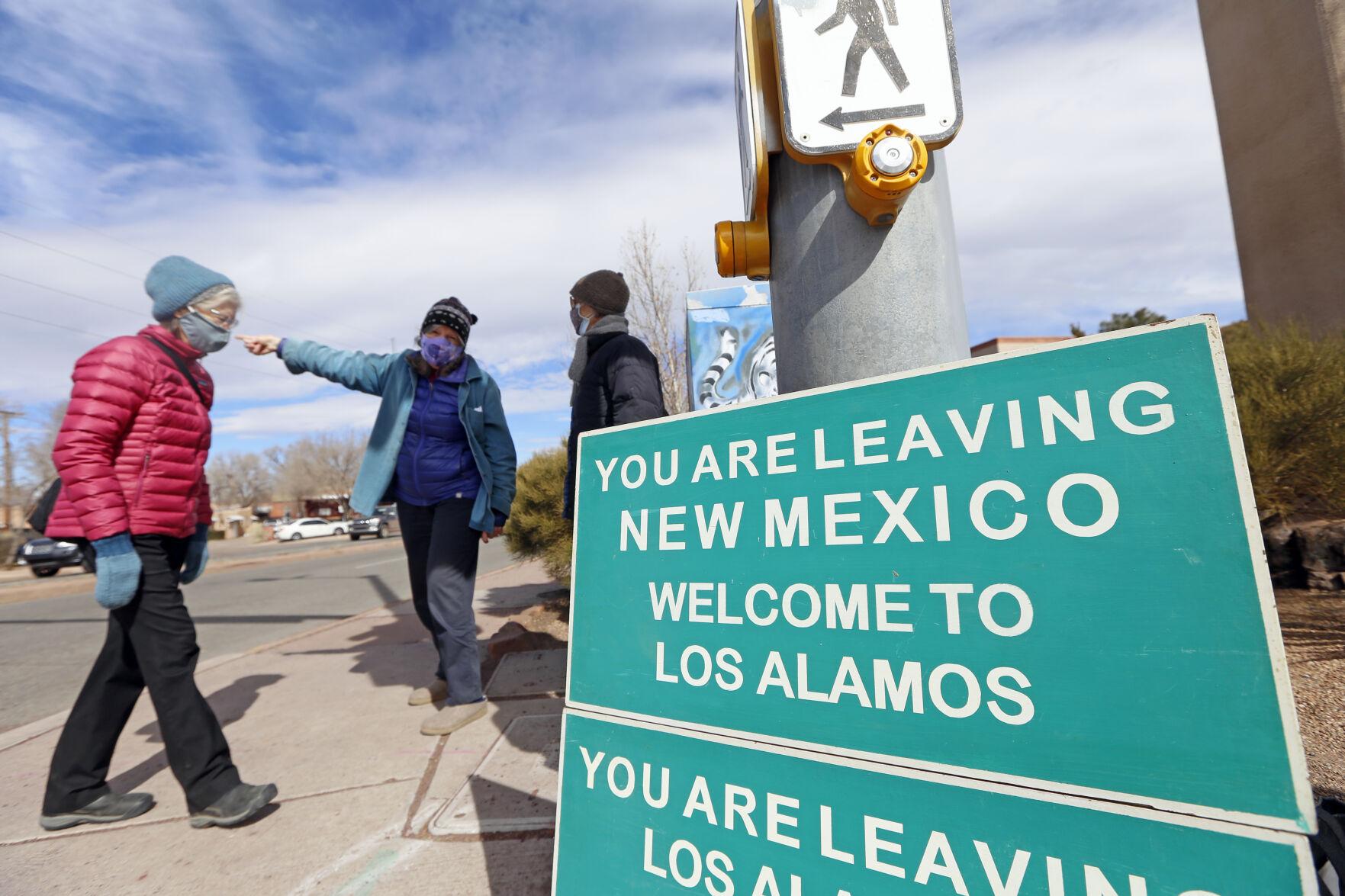
Los Alamos lab, birthplace of the atomic bomb, STILL under threat from wildfires despite repeated major incidents
“The threat and risks of wildfire to the lab and northern New Mexico will continue to increase because of climate warming, drought and expanded nuclear weapons production,” said Jay Coghlan, director of the group Nuclear Watch New Mexico.
A recent audit by the US Energy Department’s inspector general found that threat-reduction measures such as the maintenance of the lab’s network of fire roads, strategic clearing of vegetation in the surrounding area as well as the production of a coherent preparedness and mitigation plan had not been carried out
Photographic evidence included in the report indicated a tree density of 400 to 500 per acre, 10 times the recommended safe level of 40 to 50 trees per acre.
Audit Raises Concerns About Wildfire Risks at US Nuclear Lab
“The threat and risks of wildfire to the lab and northern New Mexico will continue to increase because of climate warming, drought and expanded nuclear weapons production,” said Jay Coghlan, director of the group Nuclear Watch New Mexico.
BY: SUSAN MONTOYA BRYAN | wokv.com February 10, 2021
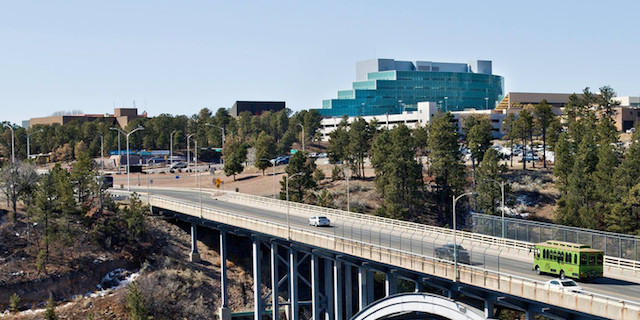
ALBUQUERQUE, N.M. — (AP) — One of the nation’s premier nuclear laboratories isn’t taking the necessary precautions to guard against wildfires, according to an audit by the U.S. Energy Department’s inspector general.
The report comes as wildfire risks intensify across the drought-stricken U.S. West. Climatologists and environmentalists have been warning about worsening conditions across the region, particularly in New Mexico, which is home to Los Alamos National Laboratory and where summer rains failed to materialize last year and winter precipitation has been spotty at best.
The birthplace of the atomic bomb, Los Alamos has experienced hundreds of millions of dollars in losses and damage from major wildfires over the last two decades. That includes a blaze in 2000 that forced the lab to close for about two weeks, ruined scientific projects, destroyed a portion of the town and threatened tens of thousands of barrels of radioactive waste stored on lab property.
Watchdog groups say the federal government needs to take note of the latest findings and conduct a comprehensive review before the lab ramps up production of key plutonium parts used in the nation’s nuclear arsenal.
Los Alamos Nuclear Weapons Lab Opens Office in the City of the Santa Fe (“Holy Faith”) of Peace and Environmental Protection
FEBRUARY 10, 2021
Santa Fe, NM – A Lab press release has announced that “[c]onnections between Los Alamos National Laboratory and the City of Santa Fe will be strengthened with the Laboratory’s opening of a new downtown office” after signing a 10-year lease on a 28,000-square-foot building. The Lab’s press release ignores LANL’s $2.9 billion nuclear weapons production budget (up 33% in one year), its proposed 46% cut to cleanup to $120 million, serious groundwater contamination and recent reports how it has neglected wildfire protection. Two catastrophic wildfires in the last 21 years on or near the Lab blanketed a large portion of northern New Mexico with possibly contaminated smoke.
The City of Santa Fe’s official name is the “La Villa Real de la Santa Fe de San Francisco de Asís” (“The Royal Town of the Holy Faith of Saint Francis of Assisi”), in honor of the beloved saint who preached peace and environmental protection and from whom the present Pope draws his name. Pope Francis has repeatedly called for the abolition of nuclear weapons and while in Japan paid homage to the victims of the Hiroshima and Nagasaki bombings. Those atomic bombs were designed and produced at the Los Alamos Lab.
LANL not serious about wildland fires
BY: T.S. Last / Journal North Copyright © 2021 Albuquerque Journal Feb, 9, 2021
SANTA FE – A recently released report by the Department of Energy’s Office of Inspector General suggests that managers at Los Alamos National Laboratory did not take wildland fire prevention seriously enough, despite two catastrophic wildland fires in the past 20 years that threatened the lab and the town, costing taxpayers millions of dollars.
“Our review found that activities designed to reduce the impact from wildland fire had not been fully implemented at Los Alamos National Laboratory (LANL) in accordance with site plans,” says the opening sentence of a 14-page memo from the Inspector General’s office dated Feb. 1.
What’s worse, the report says, some plans were never drafted, and some policies put into place after the Cerro Grande Fire in 2000 and the Las Conchas Fire in 2011 were not being followed.
It adds that lab managers haven’t developed a “comprehensive risk-based approach to wildland fire management,” as required by the Federal Wildland Fire Management Policy. The report also describes a “lack of formality.”
“Specifically, the contractor’s Wildland Fire Plan lacked requirements for documenting wildland fire management activities, and responsibilities for implementation were not well defined,” the report says.
The contractor referred to is Triad National Security LLC, which in November 2019 took over management of the lab, which is tasked with developing and manufacturing parts for nuclear weapons. Previously, Los Alamos National Security LLC had held the management contract since 2006.
It appears evident that some of the problems identified in the report predate Triad’s involvement.
The report says that there are about 2,000 structures, including 13 nuclear facilities, with an estimated value of $14.2 billion on approximately 23,000 acres of lab property.
It notes that the 2000 Cerro Grande Fire, which burned 43,000 acres, including about 7,500 acres of LANL property, resulting in $331 million in damage to the lab alone. That does not include an estimated $15 million in lost productivity per week during a 15-day shutdown and recovery period.
The Cerro Grande Fire was a “crown fire” that burned through the tree canopy and spread quickly, and the report has an entire section on mitigation of crown fires.
Despite recognition of the risk, mitigation measures to reduce the risk of crown fires had not been performed.
LANL Falls Behind on Wildfire Protection While Expanding Nuclear Weapons Production Watchdog Calls for New Site-Wide Environmental Impact Statement
FEBRUARY 9, 2021
Santa Fe, NM – The Department of Energy’s Inspector General is reporting that the Los Alamos National Laboratory (LANL) is falling seriously behind in wildfire protection. This is despite the fact that the 2000 Cerro Grande Fire forced the mandatory evacuation of both LANL and the Los Alamos townsite, burned 3,500 acres of Lab property and came within a half-mile of Area G, its largest waste dump. At the time Area G stored above ground some 40,000 barrels of plutonium-contaminated radioactive wastes. It could have been catastrophic had they burst and sent respirable airborne plutonium across northern New Mexico (inhaled plutonium is a very serious carcinogen).
In 2011 the Los Conchas Fire raced 13 miles in 24 hours to the Lab’s western boundary, where it was stopped along State Highway 4. Both it and the Cerro Grande Fire sent huge plumes of harmful smoke across northern New Mexico, possibly carrying Lab contaminants as well (operation of radioactive air emissions monitoring equipment was suspended during the Cerro Grande Fire).
Report: LANL not managing forests to prevent wildfires
Jay Coghlan, executive director of the nonprofit Nuclear Watch New Mexico, said the lab puts most of its attention on producing nuclear weapons and neglects forest maintenance, despite the disastrous Cerro Grande Fire that destroyed dozens of its structures.
“Nuclear weapons above all,” Coghlan said.”
By Scott Wyland swyland@sfnewmexican.com / sfnewmexican.com Feb 9, 2021
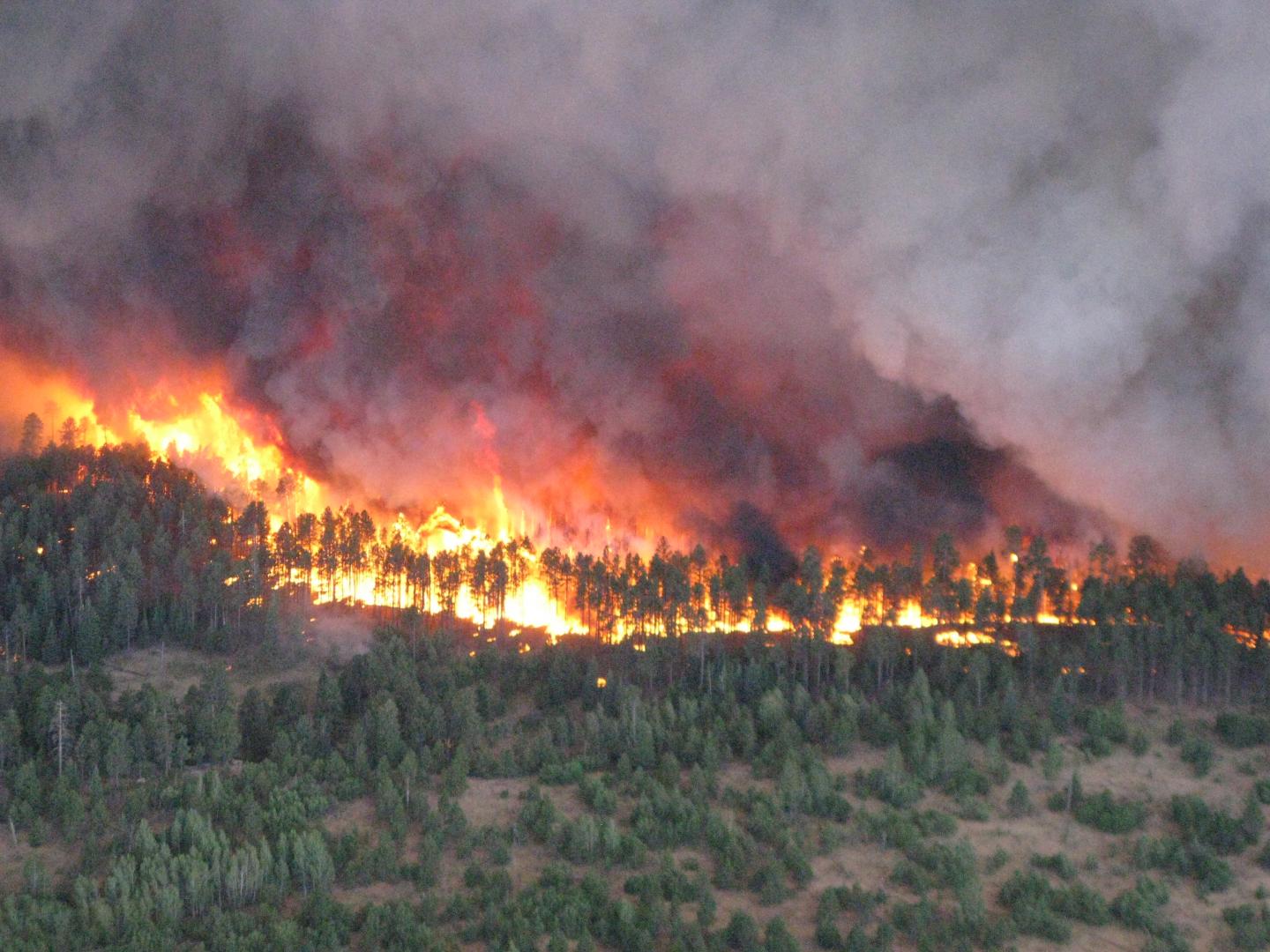
Los Alamos National Laboratory has failed to properly manage its forested lands, increasing the threat of wildfires at lab sites and surrounding areas, according to a federal watchdog.
The lab has not thinned trees or cleared forest debris from many wooded areas, nor has it maintained service roads to ensure safe passage for firefighting crews, boosting the potential for “devastating wildfires” like the Cerro Grande Fire in 2000, the U.S. Energy Department’s inspector general said in a strongly worded report released this week.
The report criticized the lab’s main contractor, Triad National Security LLC, for not following fire management plans and not documenting required yearly activities to prepare for and prevent possible wildfires at the site.
“Our review found that activities designed to reduce the impact from wildland fire had not been fully implemented at the Los Alamos National Laboratory in accordance with site plans,” the report said.
The report comes as the federal Drought Monitor shows Los Alamos County and much of the state as being in exceptional drought — the most severe condition — which raises the risks of wildfires.
Jay Coghlan from Nukewatch New Mexico and Kevin Kamps from Beyond Nuclear discuss the recent developments in Nuclear Weapons proliferation and the new international ban on nuclear weapons.
Living on the Edge also cover reasons why nuclear power may not be the low carbon panacea for transitioning our electric grid that is so widely promoted these days.
ACTION ALERTS
Nothing Found
It seems we can’t find what you’re looking for. Perhaps searching can help.
Nothing Found
It seems we can’t find what you’re looking for. Perhaps searching can help.
Interfaith Panel Discussion on Nuclear Disarmament - August 9
Nothing Found
It seems we can’t find what you’re looking for. Perhaps searching can help.
New Nuclear Media
Nothing Found
It seems we can’t find what you’re looking for. Perhaps searching can help.

